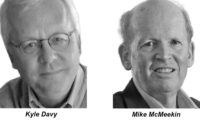Sustainability is not enough. Escalating climate, infrastructure and social crises are outpacing efforts to address them with sustainable practices.
The engineering community has tools and strategies to take us beyond sustainability—both to address dire challenges and to restore living systems. Circular economy and regenerative approaches are the principal means to achieve these ends. Engineers and other industry professionals must have the commitment and courage to step up and engage in the hard work of leading change to benefit society.
These propositions were at the heart of the recent Engineering Ideas Institute in Boulder, Colo., convened by Engineering Change Lab–USA, a group founded in 2017 that seeks to connect individuals and stakeholder groups in the engineering community to share ideas and collaborate for needed industry and social change.
The summit drew on provocations, exercises, nature walks and dialogues to shift minds and prompt participants to think differently about the future of engineering.
This year’s event focused on circular economy and regenerative strategies to push society toward a healthy, resilient future.
Championed by the Ellen MacArthur Foundation, a circular economy “decouples economic activity from consumption” and replaces linear production with circular models designed to eliminate waste and pollution, optimize recycling and reuse and regenerate natural systems.
Maury Salz, past president of the American Society of Agricultural and Biological Engineers, described the group’s new initiative to move the bioeconomy (agriculture, forestry and aquaculture) toward increased circularity (see asabe.org/CBS). He used the evolution of circular precision indoor farming systems to illustrate the potential benefits—emphasizing that this transformation will require increased engagement of engineers with circular bioeconomy systems as well as robust interdisciplinary alliances across the engineering community.
Daniel Lawse, principal of the Verdis Group, emphasized that engineers need to do more than simply learn new practices to achieve regenerative outcomes. They must adopt a “new way of thinking, seeing and being in the world” to lead society toward a regenerative future, he says.
The engineering community is uniquely positioned to implement these approaches and to move toward a healthier, more resilient future. The changes in our future built environment will not be apparent for many years; however, the first steps should be taken now to prepare for it, noted Jerry Buckwalter, chief innovation officer of the American Society of Civil Engineers. “If we wait for the nature of our future infrastructure to become obvious, we will be too late to optimize society’s use of it and reduce the risks inherent in building it.”
Buckwalter noted that engineers are not taught to embrace change but, rather, to solve problems with familiar tools. He urged engineers to spend time thinking nontraditionally and balancing contrarian thinking with respect for tradition, and “to be curious, not critical … to keep learning, adjust, try again and keep the long-term objective in mind.”
To go beyond sustainability, the Ideas Institute asserted, engineers must master new competencies such as regenerative and circular economy practices and have the courage to act and lead change.



